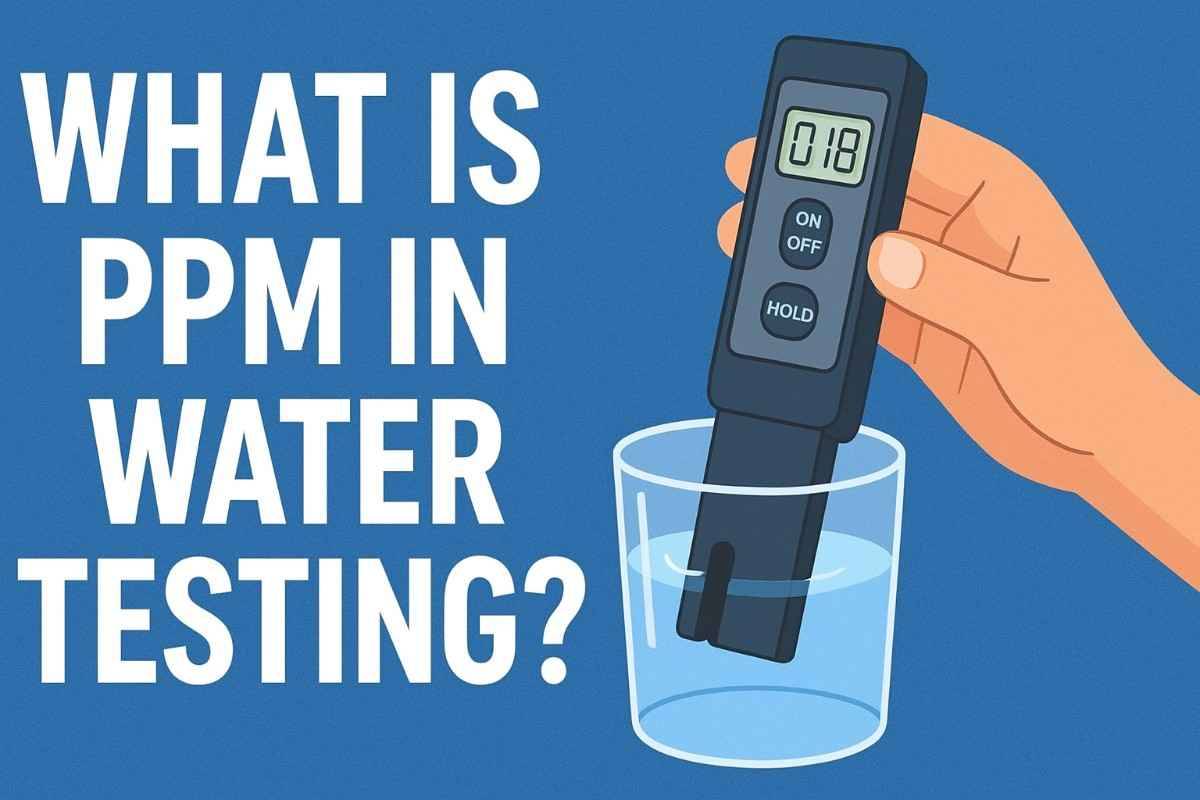share
LATEST
What is PPM in Water Testing? A Complete Guide
Sept. 6, 2025
190 Views
What is PPM in Water Testing? A Complete Guide
Water quality plays a vital role in human health, agriculture, and industrial applications. When you hear about water testing, one of the most commonly used terms is PPM. If you have ever checked the purity of drinking water, tested a swimming pool, or even measured the nutrient concentration in hydroponics, you might have come across this measurement. But what exactly is PPM in water testing, and why is it so important?
In this article, we’ll break down the concept of PPM, its significance, how it is measured, and why it matters for safe and healthy water consumption.
What Does PPM Mean?
PPM stands for Parts Per Million. It is a unit of measurement that indicates the concentration of a substance in water (or any other solution).
In simple terms, PPM tells us how many parts of a substance (like minerals, salts, chemicals, or contaminants) are present in one million parts of water.
For example:
Why is PPM Important in Water Testing?
PPM is a universal standard that helps us understand water quality. Different substances—like calcium, magnesium, chlorine, or even heavy metals—can be present in water. Some of these are good for health in small amounts, while others can be harmful if present beyond a certain limit.
Here’s why PPM matters:
-
Health and Safety
-
Excess minerals like fluoride, arsenic, or nitrates can cause health problems.
-
Too much sodium in water may not be safe for people with heart conditions.
-
Monitoring PPM ensures contaminants are within safe limits.
-
Taste and Palatability
-
Pure water (0 PPM) has no taste, but a small amount of minerals (between 50–150 PPM) enhances taste.
-
Very high PPM levels can make water salty, bitter, or metallic.
-
Industrial and Agricultural Applications
-
In hydroponics, farmers measure nutrients in water using PPM.
-
In swimming pools, chlorine levels are monitored in PPM to keep the water disinfected but safe.
-
Industries use PPM to ensure water used in processes meets specific quality standards.
-
Regulation and Standards
PPM in Drinking Water
The PPM of dissolved solids in water is often measured as TDS (Total Dissolved Solids). TDS includes minerals, salts, and other organic matter dissolved in water.
-
0 – 50 PPM → Very low mineral content (distilled or RO water, may taste flat)
-
50 – 150 PPM → Ideal for drinking (balanced taste and minerals)
-
150 – 300 PPM → Acceptable range for drinking in many regions
-
300 – 500 PPM → Still safe, but may start tasting salty
-
Above 500 PPM → Not recommended for drinking, may indicate contamination
👉 To learn more about the ideal TDS levels in drinking water, check our detailed guide here:
Best TDS Level for Drinking Water in India
How is PPM Measured in Water?
There are multiple ways to measure PPM in water, depending on the type of substance being tested:
1. TDS Meter (Digital PPM Meter)
A TDS meter is the most common device to measure the total dissolved solids in water. It works by checking the conductivity of water—since dissolved ions conduct electricity, the meter can estimate PPM.
-
Advantage: Quick, easy, affordable.
-
Limitation: Does not show what specific substances are present.
2. Test Kits and Chemical Methods
Some test kits include reagents (chemicals) that react with specific substances (like chlorine or nitrate). The resulting color change indicates the concentration in PPM.
3. Laboratory Testing
For precise and detailed analysis, lab tests are performed. These can measure exact PPM levels of different substances, including heavy metals, pesticides, and bacteria.
Common Substances Measured in PPM
When we test water, we’re usually looking at one or more of the following substances:
-
Minerals (Calcium, Magnesium, Sodium, Potassium) – Essential for health in small amounts.
-
Chlorine – Used in water treatment but harmful in excess.
-
Nitrates and Nitrites – Often from fertilizers, dangerous if too high.
-
Fluoride – Helps teeth at low levels but toxic at high levels.
-
Iron, Copper, and Heavy Metals (Lead, Arsenic, Mercury) – Harmful even in very low concentrations.
-
Dissolved Salts (TDS) – Affects taste and overall water quality.
PPM Standards for Drinking Water
Different organizations recommend safe ranges for PPM in drinking water:
-
World Health Organization (WHO): Recommends TDS less than 300 PPM for palatability, up to 600 PPM acceptable.
-
Bureau of Indian Standards (BIS): Sets the desirable limit of TDS in drinking water at 500 PPM.
-
U.S. Environmental Protection Agency (EPA): Sets a maximum contaminant level (MCL) for specific substances like nitrates (10 PPM), fluoride (4 PPM), etc.
PPM in Real-Life Applications
-
Home Drinking Water
-
Aquariums
-
Swimming Pools
-
Hydroponics & Agriculture
-
Industrial Use
How to Control PPM in Water
If water tests show very high or very low PPM, corrective steps can be taken:
Conclusion
PPM in water testing is a simple yet powerful way to measure the concentration of dissolved substances in water. It helps us understand whether the water is safe, tasty, and suitable for different applications.
For drinking purposes, the right PPM ensures a balance between purity and essential minerals. In other cases, like hydroponics, pools, or industries, monitoring PPM keeps processes efficient and safe.
So next time you see PPM on your water test report or TDS meter, you’ll know exactly what it means and why it matters.
And if you want to go deeper into understanding safe water quality, especially in the Indian context, don’t miss our detailed blog:
👉 Best TDS Level for Drinking Water in India
share Share now









